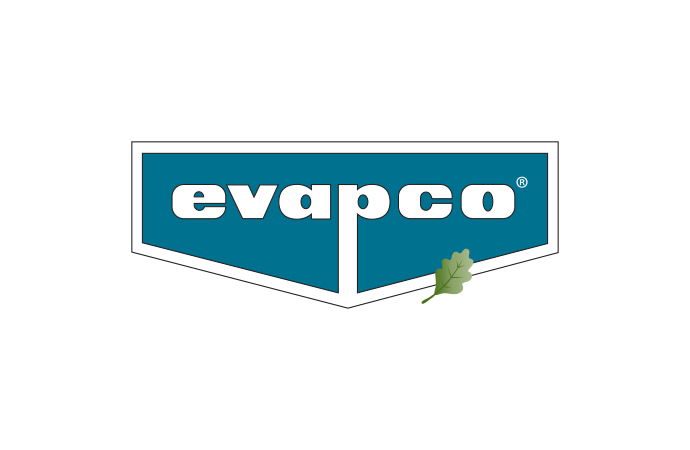Smaller evaporator tubes, line sizes, pumps and vessels – along with low recirculation rates – are lowering costs and driving sales of low-charge ammonia central systems.

Evapco low-charge chiller
Evapco continues to promote its low-charge-ammonia Evapcold packaged units and its low-charge evaporators designed for stick-built central systems, with both employing the same underlying technology, said one of its executives.
“Whether in a packaged unit or a stick-built system, we’re using the same low-charge techniques – low recirculation rates and smaller evaporator tubes, line sizes, pumps and vessels – everything is smaller,” said John Kollasch, Evapco’s vice president, industrial refrigeration product application & marketing, in an interview at the Global Cold Chain Expo in Chicago in mid-June.
The reduction in equipment size as well as costs – while maintaining the same capacity – is making the low-charge approach more popular in central systems, with low-recirculation-rate evaporators being adopted by “a lot of customers,” said Kollasch. “I see people gravitating to lower charge sometimes not for the sake of the low charge but for the smaller systems and lower costs,” especially for plants that would already be under the regulatory threshold of 10,000 lbs.
I see people gravitating to lower charge sometimes not for the sake of the low charge but for the smaller systems and lower costs.”
– John Kollasch, Evapco
He is also seeing more interest in low-charge secondary systems, with ammonia restricted to the equipment room and glycol or CO2 used in the refrigerated space.
Evapco introduced two new evaporators – offering its lowest charge to date – at IIAR’s Natural Refrigeration Conference & Heavy Equipment Expo, held in San Antonio, Texas, last February. The new evaporators, the SSTSB series and SSTEB low-profile series, both utilize 3/8-inch-diameter, internally enhanced stainless-steel tubes, which lower the charge compared to 5/8-inch-diameter tube models, with a recirculation rate of 1.2:1.
Related stories




